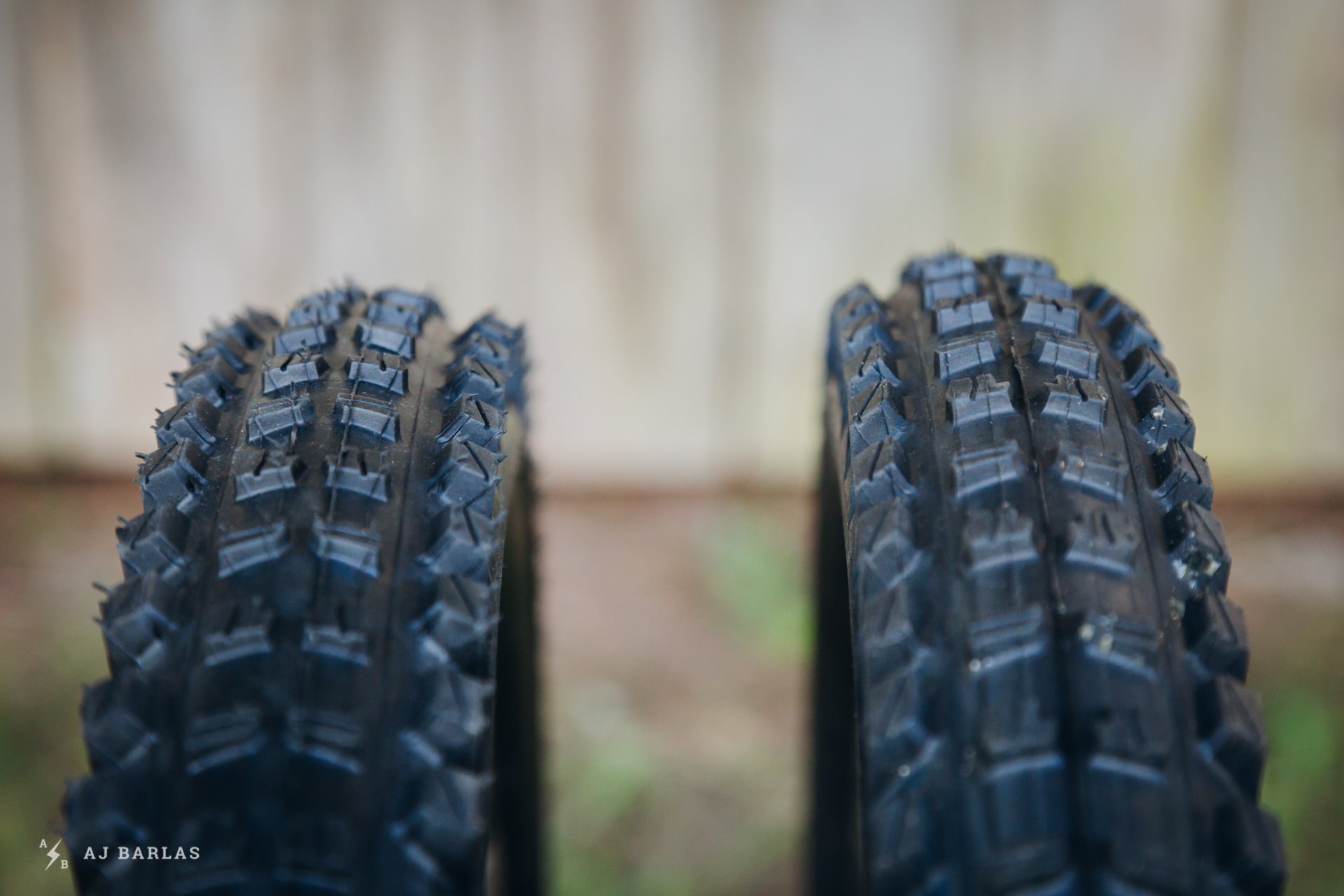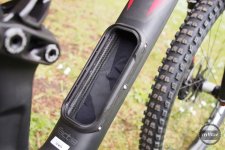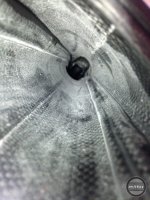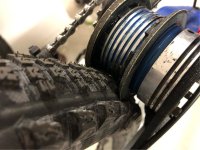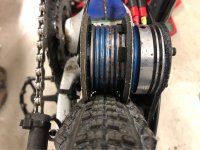I'm curious how loud your knobbies really are compared to the tire I'm running as I find mine acceptable (its a Kenda Konniption for around town shenanigans).
Here are some pictures of my current setup in testing (6384 120kv motor, waterjet bracket, vesc/battery water bottle holder).






I'm very happy with this setup so far, I've mostly been riding with it set to 250w but this ride was at 750w. Thats using the wattage limit in the vesc tool and a current setting of 40/-20 motor and 40/-20 battery. I'm running the batteries in series for 2650 mah in 8s. I was initially concerned about the limited capacity but its actually been great, it forces the rider to focus on consumption which can be very entertain, and with the 750w setting you can still blast around if you need to.
Currently, if the throttle is under about 10% its in constant regen, so there's no completely off which has a learning curve, but... Everyone I've let ride it has tried to buy it so I guess thats saying something.
I've one friend thats interested in this as added resistance for training (pedal against the regen to charge a small battery) and then a boost home, I never would have thought of that!
Also, It hasn't changed the feel of the bike at all, picking it up and carrying it feels the same.
As for the between the tread rollers, I had some similar ideas that I haven't drawn up yet, I'll do that and report back. I'm concerned about accelerated wear but that could be tolerable. I'll just have to print something off, slap the dirt tires on and see I guess!
Oh and Kepler, I believe you were curious about my comparison of this and the single chain reduction setup. I'll be writing up a reply to FZbob's thread but I will say this, they're completely different animals and I'll be sticking with the friction drive for now.
I have some ideas for an extremely compact belt setup but I'll post about that once I start making parts.
I'm also working on a handlebar control with a tiny oled display, I'll post about that when I've made more progress.
cheers and good work guys!
Nate
(Clue, the motor sees the tire as the road)




